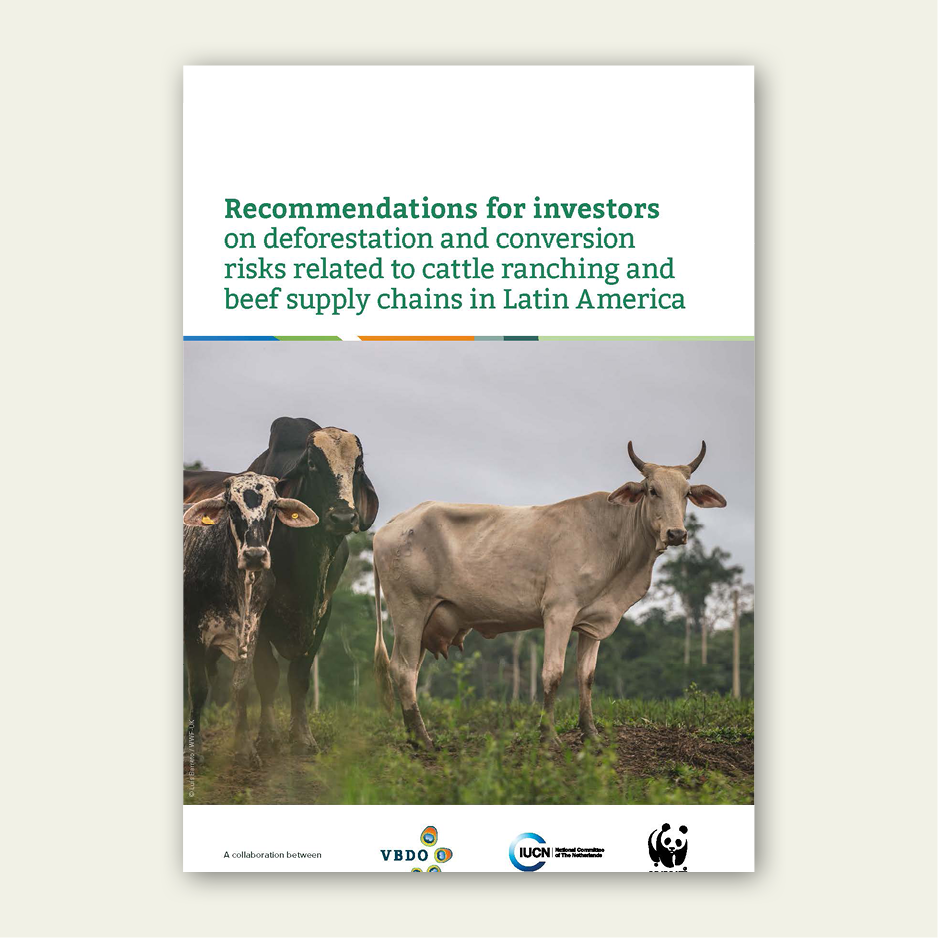On December 1st, 2020, the Brazilian space agency INPE announced that deforestation in the Brazilian Amazon had risen to a record level, the highest in 12 years. Beef production in Latin America is linked to deforestation. VBDO, IUCN NL and WWF NL have collaborated to provide recommendations for Dutch investors to prevent them from contributing to deforestation linked cattle production through their investments.
Since 2016, the VBDO, WWF and IUCN NL have been working together to inform investors about biodiversity risks related to beef production in Latin America. An internal research conducted in 2020 among Dutch financial institutions showed that investment policies of large Dutch financial institutions is not yet sufficiently focused on meat production and the risk of deforestation and land conversion.
That is why the VBDO, IUCN NL and WWF have prepared recommendations for the financial sector. The recommendations are intended to support Dutch financial institutions to better integrate the risks of deforestation and land conversion into their policy and investment decisions.
Recommendations for the Dutch financial sector
The recommendations originate from discussions with Latin American civil society organisations, investors and companies during a three-part webinar series, and the interviews and internal research that preceded it.
The paper examines the impacts and risks of beef production in Latin America and describes how Dutch financial institutions deal with these risks such as deforestation. How do they address this topic in their investment policy?
Solutions
In this paper solutions proposed by NGOs and companies for managing the risks and achieving deforestation-free supply chains are discussed. It also provides insight in how a number of investors are already looking for solutions themselves and how they put this into practice.
In addition to our recommendations, the publication also provides an overview of questions that investors can use in discussions and engagement with companies in the beef production supply chain.

